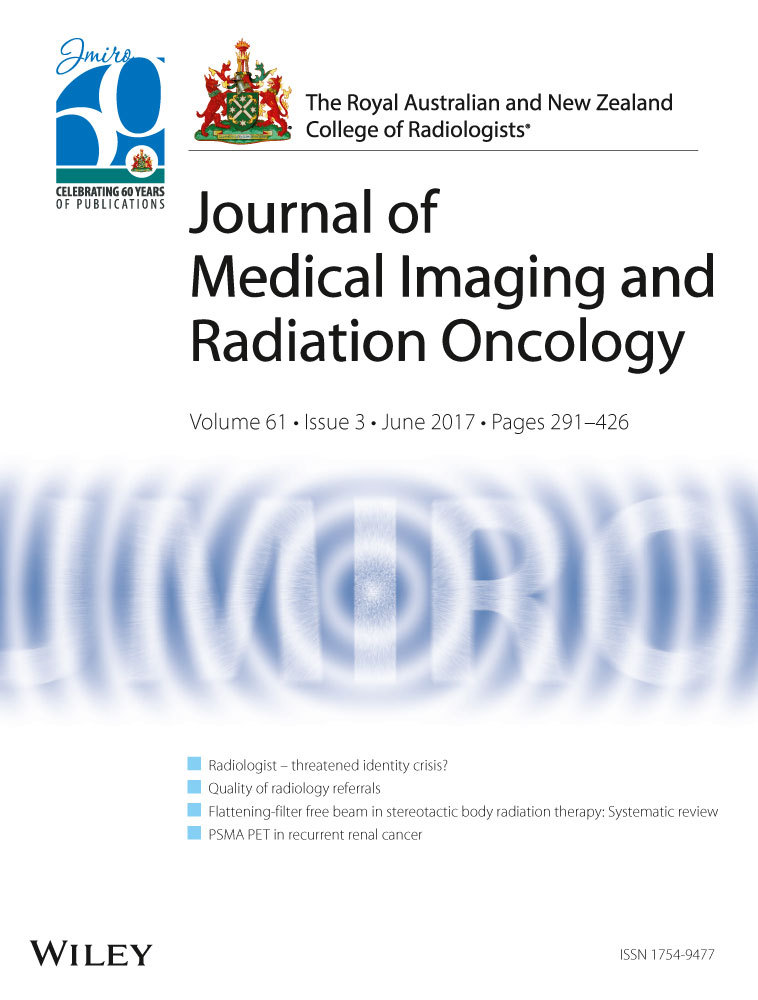Occupational burnout among radiographers, sonographers and radiologists in Australia and New Zealand: Findings from a national survey
Abstract
Introduction
Evidence demonstrates that health care professionals are more prone to burnout than other professionals due to the emotionally taxing interactions they have with their patients on a daily basis. The aims of this study were to measure occupational burnout levels among sonographers, radiographers and radiologists and to examine predictors of burnout according to demographic characteristics.
Methods
A cross-sectional online survey was administered in 2010 to radiographers, sonographers and radiologists who were members of the following professional bodies: Australian Institute of Radiography, Australian Sonographers Association and The Royal Australian and New Zealand College of Radiologists. The Maslach Burnout Inventory was used to measure burnout levels for each profession. Data were analysed using SPSS Ver 20 (IBM, Chicago, IL, USA) statistical software.
Results
A total of 613 radiographers, 121 sonographers and 35 radiologists participated in the survey. Radiographers, sonographers and radiologists had a high mean (±SD) burnout score for emotional exhaustion (39.9 ± 8.5, 42.2 ± 8.5 and 44.9 ± 7.1 respectively) and depersonalization (18.9 ± 5.5, 20.3 ± 5.8 and 20.6 ± 5.6) compared to MBI norms. Radiographers also had low personal achievement (30.8 ± 5.5) compared to MBI norms. Radiographers and sonographers who were male, worked >10 hours overtime and spent <10% of their time training students per week had significantly higher depersonalization scores (p < 0.05).
Conclusion
Burnout levels among radiographers, sonographers and radiologists are high and likely to vary according to some demographic and work-related factors. Further research is needed to examine ways to alleviate burnout in these professions so that loss of experienced staff due to burnout can be minimized and quality of patient care can be maintained.




